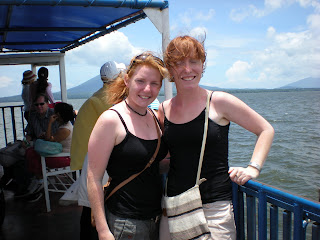Final days in Oaxaca
My first new friend is Adrian, someone that I met in June at the learning center, but who I did not get to know well until the last couple of weeks. Adrian is the kind of person who always has his hands in several cookie jars, that is to say he is constantly finding or creating new projects, from teaching Spanish to accounting to organic chicken farming, to the newest project which involves the promotion and exportation of pottery made by families of artisans in Oaxaca. Adrian is inspiring in his approach to a new project, because he cares less about the result of the project, (i.e. the possibility of failure), and more about the process of learning and discovery that goes along with it. For example, he has now read every book he could find about pottery in Oaxaca and can differentiate quality of clay, the temperature at which the pottery was fired and how strong the resulting product will be, as well as identify where the pottery comes from according to the style. I have gone with him to several markets all around the valley of Oaxaca looking for the finest products and the people who make them. As a result I have been learning something about potttery, as well as the region surrounding the city. And we have talked a lot about the value of promoting traditional artesanias and supporting the artisans in their work carrying on the traditions that have been passed through families. There is some possibility for future involvement with this project if it doesn't all fall apart, which he is the first to admit happens sometimes. But there's always the possibility of another project, and the possibility of success. What admirable optimism and dedication.
My other new friend I met as my salsa dance partner. We were supposed to perform in an exhibition here in Oaxaca that unfortunately begins Nov. 3. Walter is also from the States, although he lives here now, and we are both going home on the 2 for the election. Walter has an interesting history and an interesting project going on as well. He began coming here 10 years ago while in college and fell in love with the place. He has been coming every year since then, and while he was a graduate student of education at Howard University, he started bringing groups of students here. He started an organization called True Intercambios, and he is working on organizing educational trips for all sorts of groups to come to Oaxaca. Some of his ideas inlvolve learning dance, others would be workshops about diversity, etc. He also has extended the offer to me that if I want to organize some trips down here that we can work together. So now my wheels are turning, and being who I am, I am thinking of trips for dancers and teachers. I have been filling my journal with brainstorms, and hoping that I won't lose motivation due to fear of failure. I guess I am hoping some of Adrian's attitude will rub off on me. I can learn as much as possible along the way and maybe something will work out.
My Spanish teacher gave me a dicho mexicano the other day which is,
No hay peor lucha que la que no se hace...
which basically means there's no worse struggle/fight than the one that was never even attempted.
My thoughts for now. Love to all, y buena suerte!







